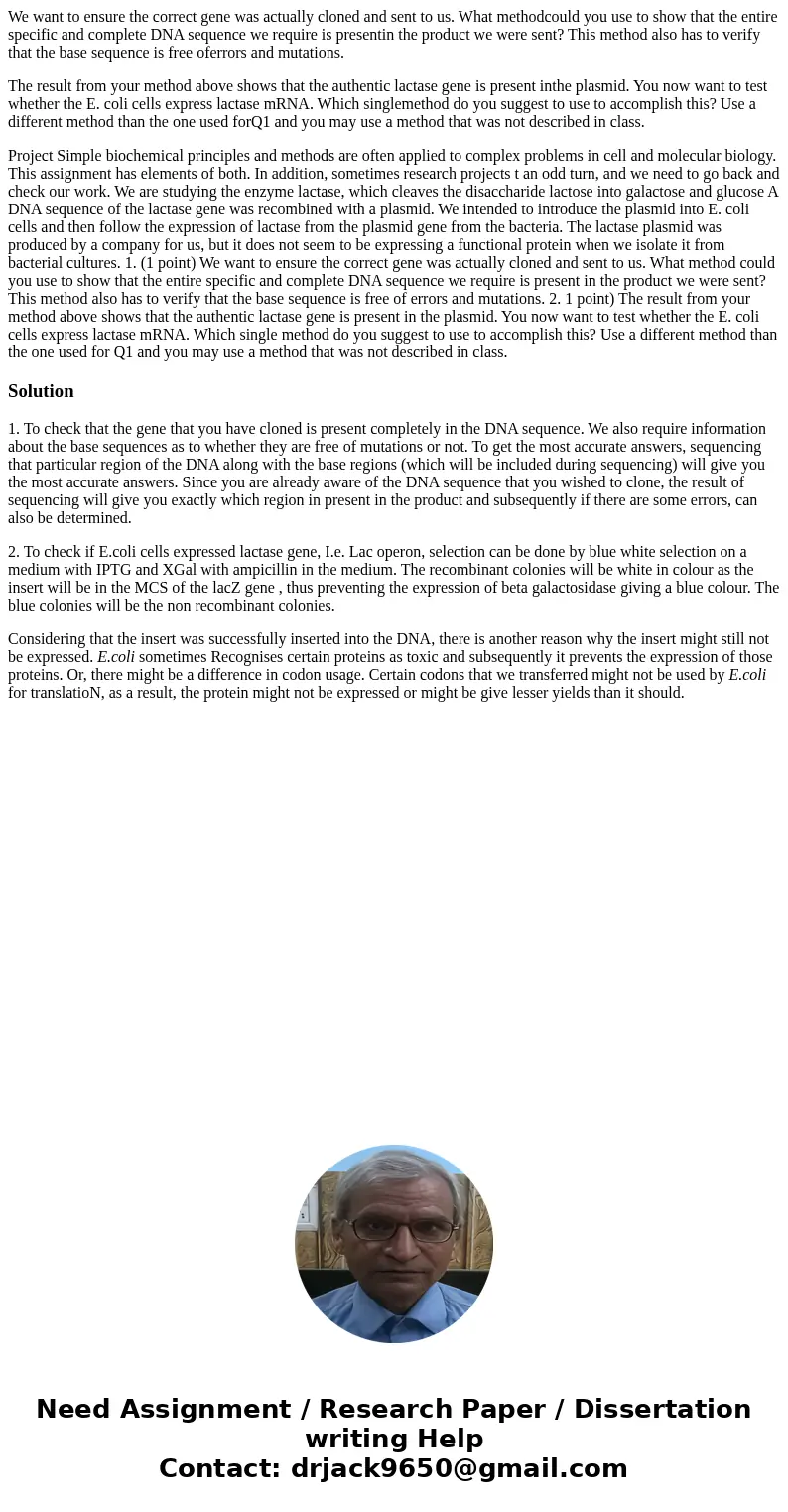We want to ensure the correct gene was actually cloned and s
We want to ensure the correct gene was actually cloned and sent to us. What methodcould you use to show that the entire specific and complete DNA sequence we require is presentin the product we were sent? This method also has to verify that the base sequence is free oferrors and mutations.
The result from your method above shows that the authentic lactase gene is present inthe plasmid. You now want to test whether the E. coli cells express lactase mRNA. Which singlemethod do you suggest to use to accomplish this? Use a different method than the one used forQ1 and you may use a method that was not described in class.
Project Simple biochemical principles and methods are often applied to complex problems in cell and molecular biology. This assignment has elements of both. In addition, sometimes research projects t an odd turn, and we need to go back and check our work. We are studying the enzyme lactase, which cleaves the disaccharide lactose into galactose and glucose A DNA sequence of the lactase gene was recombined with a plasmid. We intended to introduce the plasmid into E. coli cells and then follow the expression of lactase from the plasmid gene from the bacteria. The lactase plasmid was produced by a company for us, but it does not seem to be expressing a functional protein when we isolate it from bacterial cultures. 1. (1 point) We want to ensure the correct gene was actually cloned and sent to us. What method could you use to show that the entire specific and complete DNA sequence we require is present in the product we were sent? This method also has to verify that the base sequence is free of errors and mutations. 2. 1 point) The result from your method above shows that the authentic lactase gene is present in the plasmid. You now want to test whether the E. coli cells express lactase mRNA. Which single method do you suggest to use to accomplish this? Use a different method than the one used for Q1 and you may use a method that was not described in class.Solution
1. To check that the gene that you have cloned is present completely in the DNA sequence. We also require information about the base sequences as to whether they are free of mutations or not. To get the most accurate answers, sequencing that particular region of the DNA along with the base regions (which will be included during sequencing) will give you the most accurate answers. Since you are already aware of the DNA sequence that you wished to clone, the result of sequencing will give you exactly which region in present in the product and subsequently if there are some errors, can also be determined.
2. To check if E.coli cells expressed lactase gene, I.e. Lac operon, selection can be done by blue white selection on a medium with IPTG and XGal with ampicillin in the medium. The recombinant colonies will be white in colour as the insert will be in the MCS of the lacZ gene , thus preventing the expression of beta galactosidase giving a blue colour. The blue colonies will be the non recombinant colonies.
Considering that the insert was successfully inserted into the DNA, there is another reason why the insert might still not be expressed. E.coli sometimes Recognises certain proteins as toxic and subsequently it prevents the expression of those proteins. Or, there might be a difference in codon usage. Certain codons that we transferred might not be used by E.coli for translatioN, as a result, the protein might not be expressed or might be give lesser yields than it should.

 Homework Sourse
Homework Sourse